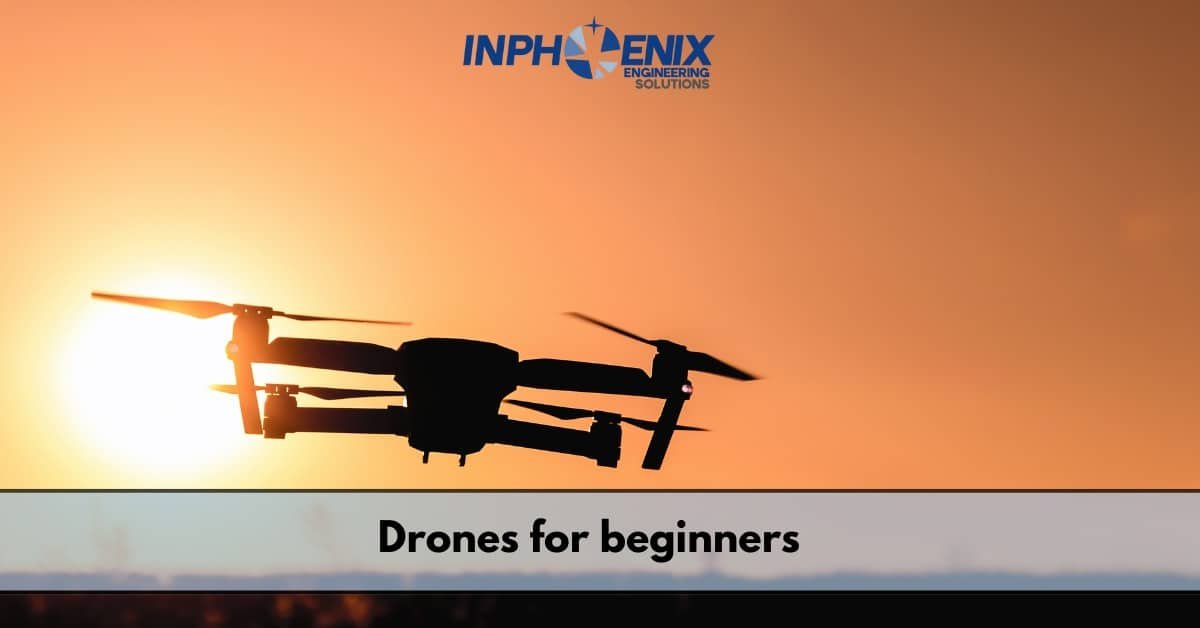The world of drones beckons with its promise of stunning aerial views and exciting new perspectives. But for beginners, the vast array of features and technical specifications can be overwhelming. Whether you're an aspiring aerial photographer, an enthusiast looking for a new hobby, or a filmmaker wanting to capture breathtaking footage, selecting the right drone is crucial, especially as a beginner. With a plenty of options available, it can be overwhelming to determine which features are essential for your needs. Fear not, aspiring drone pilots! This guide explores the top 10 must-have features for Drones for Beginners, ensuring a smooth and frustration-free takeoff into the world of flight.
1. Compact and Lightweight Design:
Your first drone is for learning, so prioritize maneuverability over size. A lightweight and compact drone is easier to control, less intimidating, and perfect for practicing in smaller spaces.
2. Ease of Use
As a novice pilot, simplicity is key. Look for drones that are easy to fly and navigate, preferably with intuitive controls and user-friendly interfaces. Features like one-touch takeoff and landing can significantly reduce the learning curve and enhance your overall experience.
3. Stability and Control
Stability is essential for smooth flights and steady footage. Opt for drones equipped with advanced stabilization technologies such as GPS and gyroscopic systems, ensuring precise control and minimal drift even in harsh conditions. A stable drone is crucial for capturing smooth footage and mastering control. Features like gyroscopes and accelerometers help maintain a level flight path, especially in breezy conditions. This is a vital feature for any beginner drone, as it allows you to focus on learning to fly without worrying about erratic movements.
4. Durable Construction:
Crashes are inevitable during the learning process. A well-built drone with a tough outer shell can withstand minor bumps and collisions, allowing you to learn without constant worry. This is especially important for drones for beginners, which are more prone to bumps and tumbles.
5. Decent Battery Life:
Extended battery life is crucial for maximizing your flight time and capturing more footage without constant interruptions for recharging. Prioritize drones with long-lasting batteries or the option for easy battery swaps to prolong your time in the air. Longer flight times translate to more practice and exploration opportunities. Aim for a drone for beginners with a battery life of at least 10-15 minutes, allowing you to comfortably hone your piloting skills.
6. Camera Quality
If you're interested in aerial photography or videography, the camera quality is paramount. Look for drones equipped with high-resolution cameras capable of capturing stunning images and smooth, clear videos. Features like adjustable gimbal stabilization can further enhance the quality of your aerial footage.
7. Beginner-Friendly Flight Modes
Many drones offer beginner-friendly flight modes designed to assist novice pilots and help them develop their skills gradually. Features like altitude hold, headless mode, and auto-hovering can provide added stability and confidence during flight.
Return to Home Function: This feature is a lifesaver, especially for new pilots. It allows the drone to automatically return to its takeoff point with the press of a button, preventing accidental flyaways. This is a must-have safety feature for all the drones for beginners.
Altitude Hold: Maintaining a steady altitude can be tricky for beginners. This feature automatically locks the drone's altitude, freeing you to focus on steering and capturing that perfect shot. This is a helpful feature for beginner drone pilots as it allows them to focus on maneuvering the drone without worrying about altitude control.
Headless Mode: This game-changer simplifies control by making the drone's movement relative to your position, not its own orientation. No more struggling to remember which way is forward! Look for this feature specifically when choosing a best beginner drone. Learn more about what is headless mode on a drone.
8. Portability and Compact Design
For on-the-go pilots, portability is a significant factor to consider. Choose drones with foldable or compact designs that are easy to transport and store, allowing you to take your drone adventures wherever you go without hassle.
9. Real-Time Feedback and Connectivity
Real-time feedback is essential for monitoring your drone's status and adjusting your flight accordingly. Look for drones with reliable connectivity options such as Wi-Fi or radio frequency transmission, along with companion apps that provide live telemetry data and camera feeds to your smartphone or tablet.
10. Value for Money
Last but not least, consider the overall value proposition of the drone you're eyeing. While budget-friendly options are tempting, prioritize models that offer the best combination of features, performance, and reliability within your price range. Remember, investing in a quality drone upfront can save you time, money, and frustration down the line.
By prioritizing these features, you can choose a drone for beginners that sets you up for success. Remember, the most important feature is to have fun and enjoy the incredible possibilities that drone technology offers. So, take flight, explore your world from a new perspective, and happy flying!

